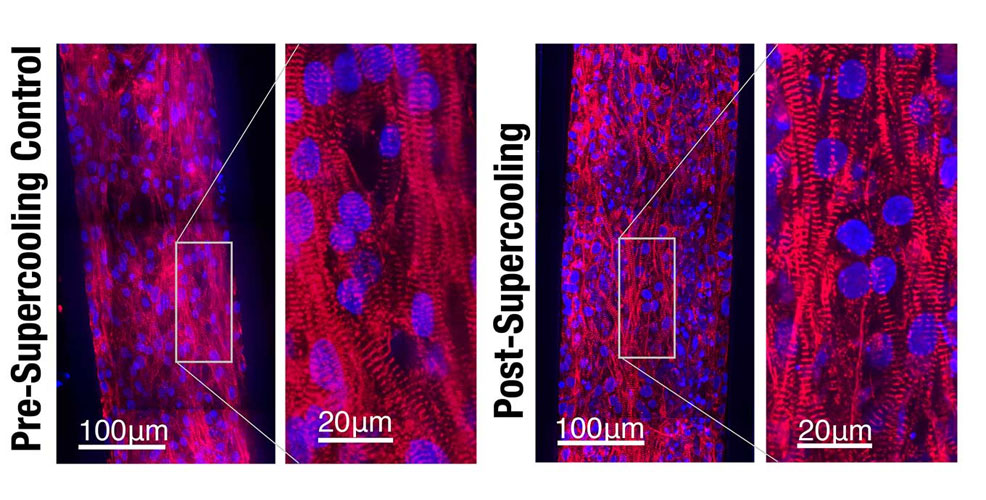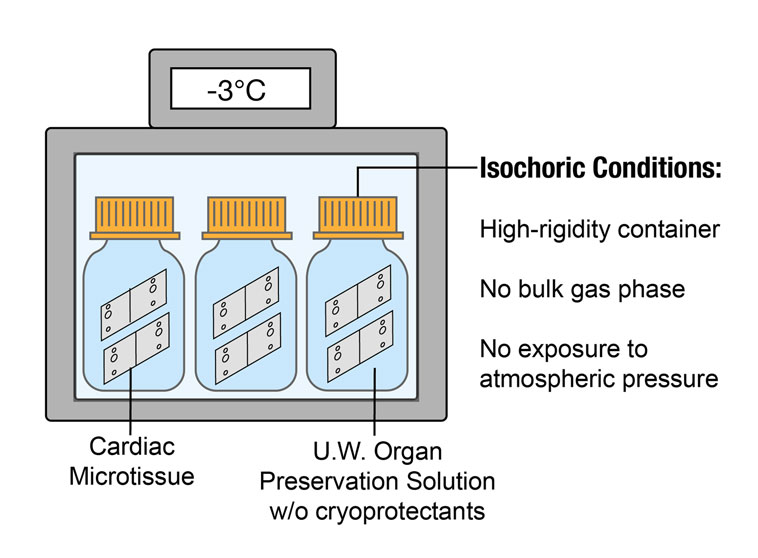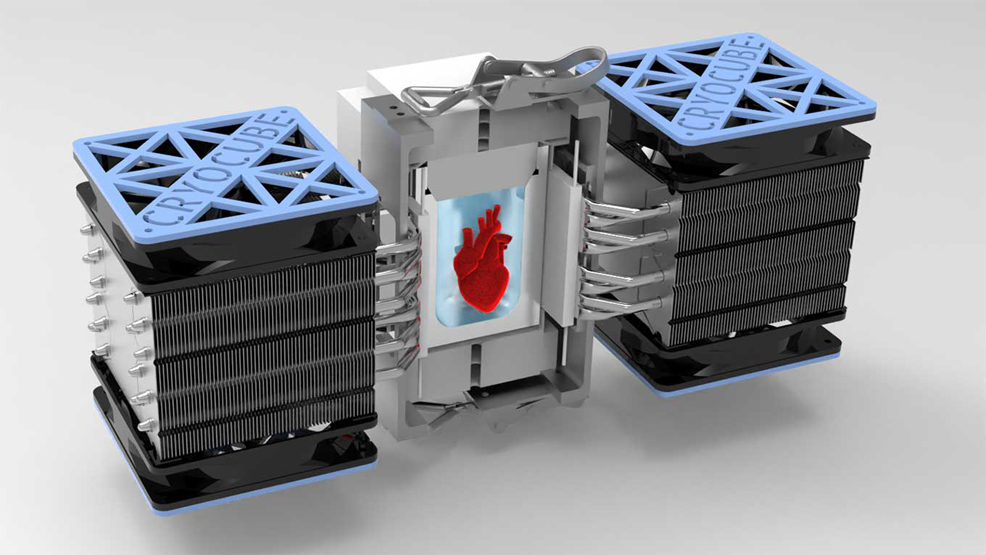
18th October 2021 New cryopreservation technique revives heart tissue after three days Researchers at the University of California, Berkeley, have successfully revived human heart tissue after it had been preserved in a subfreezing, supercooled state for up to three days.
A key proof-of-concept of supercooled tissue cryopreservation has been reported by scientists at the University of California, Berkeley. Their breakthrough is described in the journal Communications Biology. By preserving cardiac tissue at a constant volume in a rigid isochoric chamber, researchers managed to prevent the formation of ice crystals that could have damaged the micro heart muscle cells. They examined the structural integrity of the heart cells and whether the tissue retained normal functions, such as autonomous beating, and responsiveness to drugs and external electrical stimuli. Tests confirmed that their method – which they call "isochoric supercooling" – had not altered the structural integrity of the heart tissue, nor did it significantly affect the beat rate or beat waveform. The "constant volume" state of isochoric freezing requires that a sample be kept within liquid in a sealed, air-free rigid container. Such conditions yield no space for cell-damaging ice to form, even at temperatures that fall below freezing. This differs from conventional isobaric freezing, in which material is in contact with the atmosphere at a constant pressure. Samples are frozen solid under atmospheric pressure, a process that also takes more energy. Boris Rubinsky, Professor Emeritus of Bioengineering at UC Berkeley, pioneered the new method. He noted that in previous studies, they had been able to cool samples down to –22°C (–7.6°F) while keeping 40% of the material unfrozen. "This is fundamental thermodynamics. When the material to be frozen is confined in a rigid box, then only part of the volume freezes," he said. Rubinsky and scientists at the U.S. Department of Agriculture recently showed that isochoric freezing could be applied to the food industry, for better quality preservation of food and reduced energy use compared with conventional freezing methods. His team now holds a patent on isochoric supercooling.
"To our knowledge, this is the first-ever report of the supercooling and revival of autonomously beating, engineered human cardiac muscle," said his colleague and study co-author Matt Powell-Palm, a postdoctoral scholar at UC Berkeley. Powell-Palm is also the CEO of BioChoric Inc., a startup working on clinical translation of this technique. For this study, the researchers used cardiac tissue grown from adult stem cells – a heart-on-a-chip system developed in the lab of Kevin Healy, Professor of Bioengineering at UC Berkeley, and co-senior author of the paper. The cardiac tissue beats at a rhythm comparable to a human heart, and the system's microfluidic channels replicate the way cells are exposed to nutrients and drugs. "It's not enough to say that these biological samples survived supercooling," explained Healy. "We wanted to demonstrate that physiological and metabolic function remained largely intact." The team submerged each heart-on-a-chip in a rigid chamber filled with a common organ preservation solution, chilled down to –3°C (27°F). They removed the heart cells from the solution after durations of 24, 48 or 72 hours, and returned them to a warm 37°C. They found that spontaneous beating resumed for 65% to 80% of the human heart muscle chips that had been supercooled for up to three days. Moreover, no significant difference resulted from the duration of supercooled preservation. Structural integrity of the heart tissues remained intact, with beat rates almost identical. "We consider these percentages relatively high for preservation recovery results – especially considering the intrinsic variability in these heart-on-a-chip platforms and the fact that no cryoprotectants were used," said Powell-Palm. Rubinsky believes the results have near-term implications for the preservation and transport of organ-on-a-chip platforms, expanding access beyond the select few labs that can manufacture them for biomedical research and industry. "Such platforms are valuable tools for the design of new drugs for diseases of the heart and other organs," he said. In the longer term, the researchers believe their new cooling and revival technique will be scaled up to full organs – though they emphasise that their research is still at an early stage. "The technology used to cool the tissue is sound and robust, but we now need to develop techniques to warm things up consistently," explained Healy. "That was easier with the mini heart muscles we used for this study. Working on whole organs will require more work."
Comments »
If you enjoyed this article, please consider sharing it:
|









